�
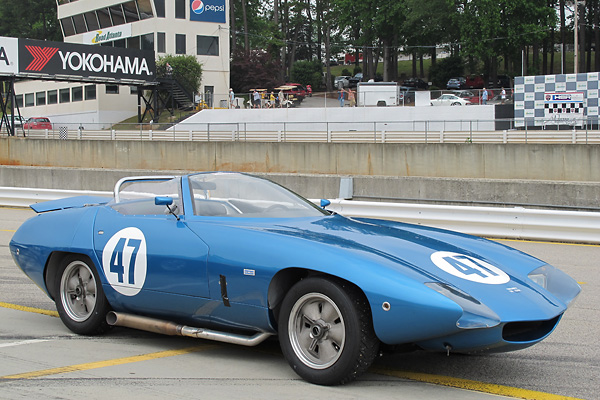
�
�
The Hart Family's 1968 Triumph TR250K Vintage Race Car
� � Owner: The Hart Family� City: Seattle, Washington
� Chassis: based on TR4A
� Engine: Triumph 2.0L inline six
� Race prepared by: Tony Garmey �
�
The Shape of Things to Come?
��
In late 1967, Triumph's North American Competition Manager partnered with a top-flight stylist�
to create a one-off racecar with provocatively modern and aerodynamic styling. Their racecar�
was specifically built to compete in the 1968 running of the Sebring 12 Hours of Endurance�
race, but the two men candidly hoped their car's success would shift Triumph toward leading�
edge product styling. Dubbed "TR250K", the car featured a Triumph 2.5L six-cylinder engine�
mounted in a modified TR4A chassis and clothed in entirely custom aluminum bodywork.�
�
The "K" in TR250K alluded to R.W. "Kas" Kastner who hand-carried a rendering by his friend�
Peter Brock to England and used it to secure Triumph's authorization. The ace in Kastner's pocket�
was that he'd already shown the same sketch to Car and Driver magazine and quietly secured a�
promise that the Triumph would be featured on their cover if the car were completed and�
entered at Sebring. Triumph alloted Kastner a $25,000 budget for the whole project, including�
race expenses. TR250K's chassis was assembled in Triumph's Competitions Department workshop by�
Kastner, Jimmy Coen and Bob Avery. The car's custom aluminum bodywork was fabricated�
by a local shop named Borth and Rose, and the body was married to the chassis and completed�
in Brock's race shop. Brock personally spent a lot of time chasing down parts and sponsorship.�
Dave Kent applied show-quality paintwork shortly before TR250K's public unveiling.�
�
The TR250K is one of many influential designs to come from the drawing board of Brock. His career�
started at General Motors' Styling Division, where in 1957 he proposed a treatment that ultimately�
became known as the Corvette Stingray. Brock left General Motors when that company decided to�
retreat from racing. Working for Shelby-American in the early sixties, Brock styled the Daytona�
Cobra Coupe. Later, when Ford took over the GT40 program from Shelby-American, Brock struck out�
on his own to form Brock Racing Enterprises (BRE). One of his early projects at BRE was the Hino�
Samurai GT (circa 1967), which was the first GT racecar to feature a moveable rear spoiler. �
�
Through the mid-sixties, Kas Kastner's path crossed frequently with Peter Brock's. In those days,�
Brock lived just ten minutes from Kastner's home in Manhattan Beach (in southwestern L.A. county).�
The two men enjoyed getting together to talk about cars. It was the Space Age, and Kastner wished�
Triumph would pursue much more modern styling. Besides helping with their sales and brand image,�
streamlined bodywork would help Triumph drivers win races. �
�
The TR250K's design reflects a 1967 idea of aerodynamics. Priority was given to a low hood line�
and radically swept back windscreen. That low hood went hand-in-glove with another important�
feature: TR250K was built on a lightly modified Triumph frame but its six-cylinder engine�
was shifted rearward by over nine inches compared to a standard Triumph TR250¹ engine installation�
to improve fore/aft weight distribution. Creation of aerodynamic downforce wasn't a design�
priority, but Brock certainly realized that the car's overall shape would create lift. A�
moveable rear spoiler (similar to the Samurai GT's) was chosen to help mitigate lift.�
�
Please support the sponsoring companies who make www.BritishRaceCar.com possible, including:
� �
 �
�
�
�
Just One Race
��
TR250K was built for exactly one race: the Sebring 12 Hours of Endurance to be held on March 23,�
1968. Obviously, it was imperative that the car be completed on time.�
�
Sebring race records show TR250K was officially entered by "Leyland Motor Corporation -�
Teaneck, New Jersey". It was assigned racing number 47, and was classified to compete in�
Sports Prototype (Group 6) Class 10. Team drivers were Jim Dittemore of Redondo Beach CA,�
Bob Tullius of Falls Church VA, and Mike Rothschild of Milburn NJ. Exactly five cars were�
entered in Class 10: TR250K plus the four Porsche 907 works entries. (Porsches finished 1st�
and 2nd overall.) Incidentally, the works MGC GTS�
was placed in Class 11 due to its larger (2968cc) engine. �
�
Construction of TR250K came right down to the wire, and the team was left with only one day of�
testing at Willow Springs Raceway in Rosamond, California. The team then packed up the car and�
headed for Sebring Florida. In practice at Sebring, the team discovered cooling problems. It�
turned out to be a simple issue of header tank plumbing, but mistakes in the Sebring garages�
kept the team scurrying around through the evening before the race. The team managed to�
qualify 39th quickest of 68 starters with a lap time of 3:20.200 around the 5.200 mile circuit�
for an average speed of 93.506mph. �
�
The TR250K's original wheels had been sourced from the Chaparral Cars racing team, and had to be�
specially modified to fit Triumph hubs. These modified wheels proved to be the TR250K's weakest�
link: one of the rear wheels tore apart at its stud circle just two and a half hours into the�
twelve hour endurance race. The car spun around, and came to a stop. Although there was no body�
damage, the accident caused suspension damage that the team wasn't equipped to repair at the�
racetrack. TR250K's race came to a premature end.�
�
�
IMPORTANT ANNOUNCEMENT
�
BritishRaceCar.com will have to cut back plans for continued growth if we can't find more financial support.
�
If you like what you've found here, and you want to see more, please click here and follow the instructions.
�
Readers like you keep BritishRaceCar.com online and growing through voluntary financial contributions.
�
�
�
True to their word, Car and Driver magazine's April 1968 edition featured TR250K on its cover.�
Inside, Leon Mandel heaped praise on the TR250K even while heaping criticism on Triumph management.�
Under a title that read "TR-250K: Salvation of an Empire" Mandel wrote "It's absolutely the sexiest,�
wildest appeal to visceral response since mini skirts. Right now it's strictly a racer, but it's�
designed to be a production car as well. It should be." He concluded the article: "And�
they're not building it."�
�
From Sebring the car was whisked off to the Detroit Auto Show and then continued touring around the�
nation's car show circuit. After that, it went to Peter Brock who only briefly kept it before selling�
it on.²�
�
At some point, TR250K was painted red and it became part of the Blackhawk Museum's reserve collection.�
TR250K drifted into obscurity only to reappear gloriously in vintage racing some thirty years later.�
Pat and Bill Hart purchased TR250K from the museum and commissioned Tony Garmey of Horizon Racing�
in Maple Valley, Washington to restore the car to its present condition.�
�
�
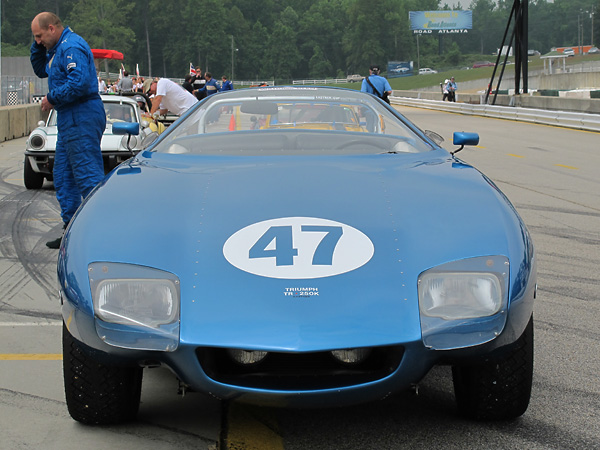
�
TR250K's windshield was a leftover from Brock's previous Hino Samurai GT project (circa 1967).
�
 �
�
�
�
Features and Specifications (as currently presented)
�| Engine: | �rebuilt and race prepared Triumph 2.0L six-cylinder engine�
(originally raced at Swbring with 2498cc, 2.9" bore, and 3.7" stroke engine.)�
ATI Super Damper harmonic balancer.�
Triple Weber 45DCOE carburetors.�
Fabricated intake manifolds.�
Mallory Unilite distributor.�
MSD Blaster ignition coil.�
Taylor Spiro Pro 8mm silicone spark plug wires.�
Deep sump finned aluminum oil pan.�
NAPA Gold 1622 oil filter, mounted on a Moroso remote filter mount. | �
| Cooling: | �Harrison aluminum crossflow radiator.�
Electric cooling fan.�
Setrab 50-618-7612 aluminum oil cooler. | �
| Exhaust: | �custom 6-2-1 stainless header. | �
| Transmission: | �Triumph gearbox, rebuilt with close ratio gears.�
Girling 3/4" master cylinder. | �
| Rear end: | �Triumph rear end with TR4A (not TR5/TR250) style mounting bracket. | �
| Front Susp.: | �unequal length dual wishbone front suspension.�
stock Triumph TR4A Alford & Alder forged uprights.�
KONI telescoping shock absorbers.�
Adjustable anti-sway bar. | �
| Rear Susp.: | �Hypercoil coil springs.�
KONI telescoping shock absorbers.�
Adjustable anti-sway bar mounted on aluminum pillow blocks. | �
| Brakes: | �(master) dual Airheart Brake 7/8" resin composite master cylinders with bias bar. � (front) Wilwood aluminum calipers. Vented rotors. � (rear) Wilwood aluminum calipers. Vented rotors. | �
| Wheels/Tires: | �custom aluminum racing wheels, knock-off mounted.�
Cobra Racing (Torrance, California) XK2004S stainless steel wingnuts.�
Hoosier Speedster radial tires (205/60R15). | �
| Electrical: | �Universal Power Group UB12550 sealed lead acid battery.�
Delco-Remy 12SI style alternator.�
Gear reduction starter. | �
| Instruments: | �(left to right)�
Smiths tachometer (0-8000rpm),�
Stewart Warner water temperature gauge (100-265F),�
Stewart Warner oil temperature gauge (140-325F),�
Stewart Warner ammeter (60-60A),�
Stewart Warner oil pressure gauge (5-100psi), and below is a �
VDO fuel pressure gauge (0-15psi). | �
| Fuel System: | �custom fabricated aluminum fuel tank.�
Facet Bendix-style electric fuel pump.�
Holley adjustable fuel pressure regulator. | �
| Safety Eqmt: | �Willans cam-lock safety harness.�
Quick release steering wheel hub.�
SPA Design FireSense fire suppression system.�
SPA Design side view mirrors. | �
| Body: | �original! (Repainted, of course.) | �
| Weight: | �2210# with 5 gallons of fuel. | �
| Racing Class: | �vintage CP. | �
Engine Installation
��
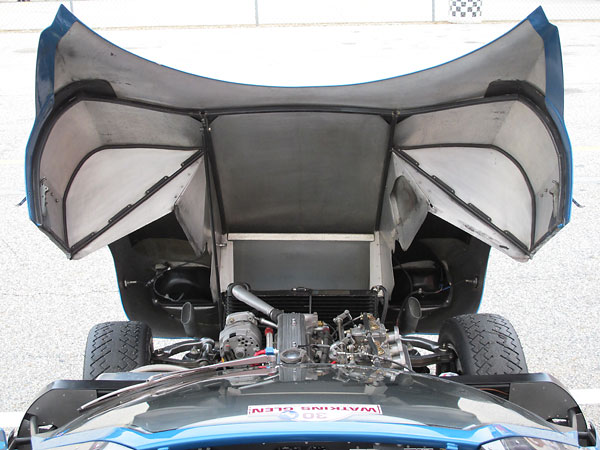
�
To achieve a low hood profile and to minimize frontal area, the Triumph 2.5L six-cylinder
�
engine was shifted over nine inches rearward compared to a regular Triumph TR250 and a
�
very compact and efficient Chevrolet Corvette radiator was used.
�
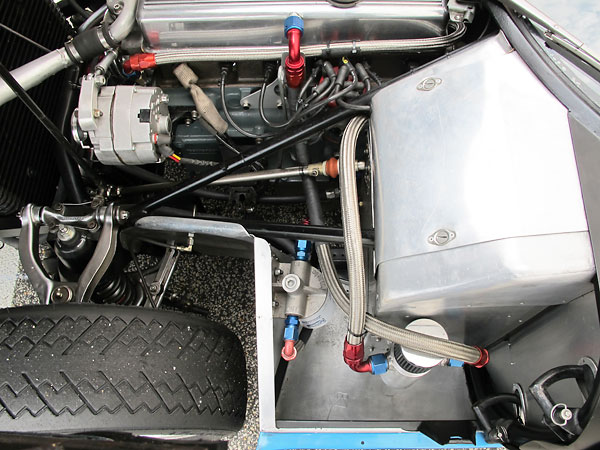
�
This is an aftermarket (clone) Delco-Remy 12SI alternator, set-up with simplified "one-wire" connection
�
and with a non-standard fan and pulley. Delco pioneered internal voltage regulators with their 10SI
�
range, which was first introduced on the 1969 Chevrolet Corvette. The 12SI range dates to 1983.
�

�
Aluminum paneled firewall and footbox.
�
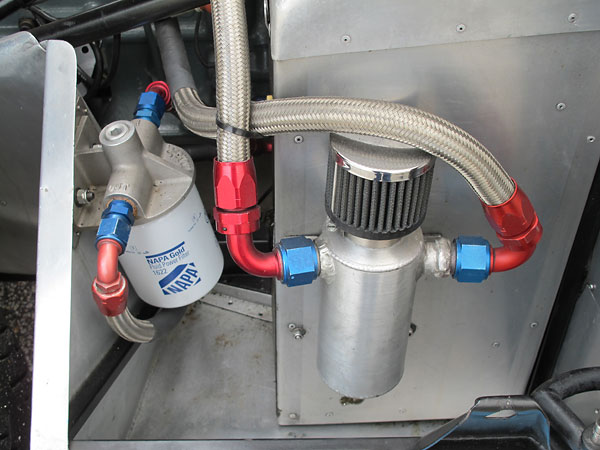
�
NAPA Gold 1622 oil filter, mounted on a Moroso remote filter mount.
�
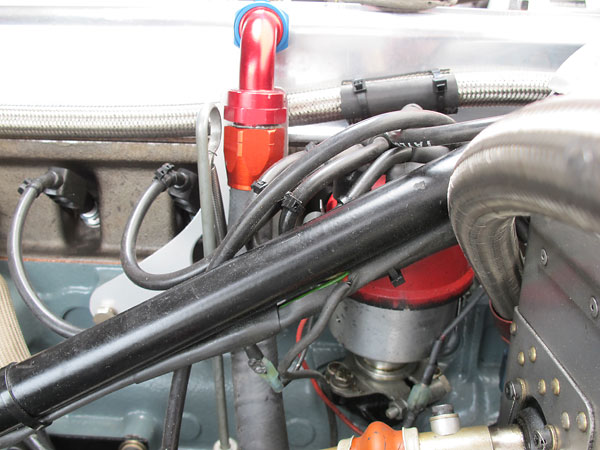
�
Mallory Unilite distributor.
�

�
Taylor Spiro Pro 8mm silicone spark plug wires.
�
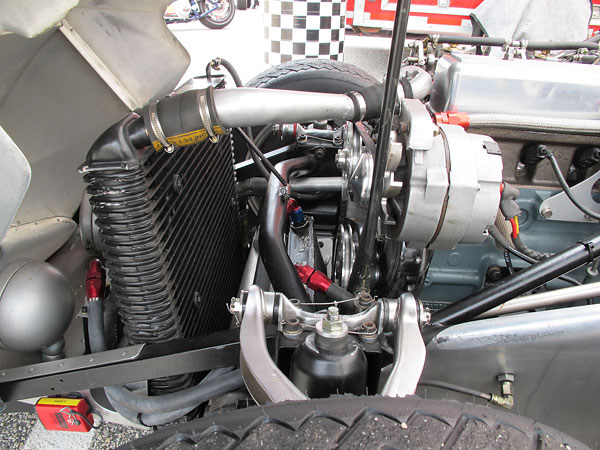
�
Chevrolet Corvette aluminum radiator.
�

�
Harrison Aluminum Radiator
�
Important - Proper maintenance requires that this cooling system be protected against corrosion as
�
described in the owner's guide. To avoid radiator damage, use only those anti-freezes, additives and
�
cleaners specifically recommended for aluminum radiators by their marketers or which meet the
�
requirements of G.M. specifications. Suitable products are available from your General Motors
�
dealer. Do not use inhibitors labeled as "acid neutralizers."
�
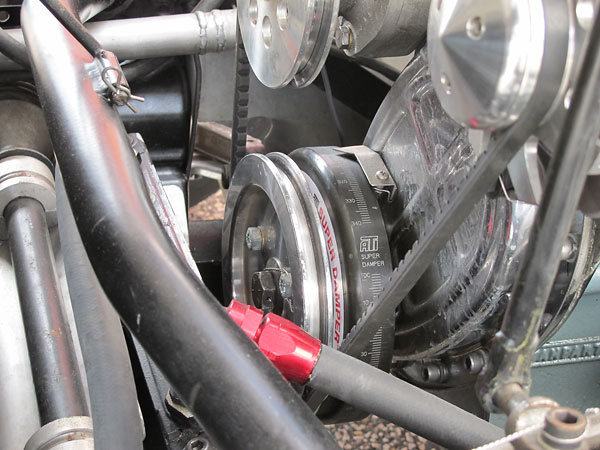
�
ATI Super Damper harmonic balancer.
�
Please support the sponsoring companies who make www.BritishRaceCar.com possible, including:
� �
 �
�
�
�
�

�
TR250K's original bodywork was hand-formed from 0.050" thick aluminum.
�
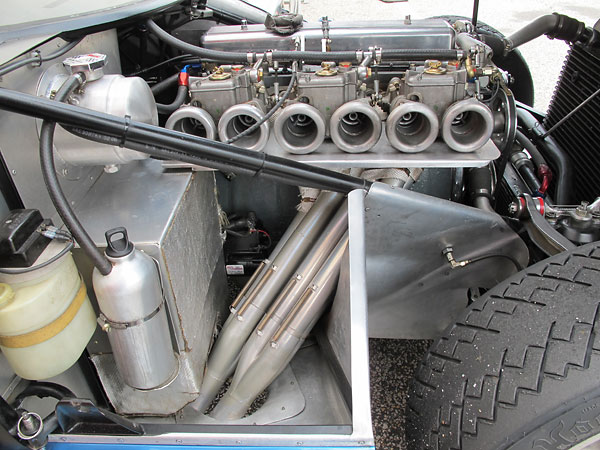
�
TR250K's original exhaust system was built by George Boskoff.
�

�
Triple Weber 45DCOE carburetors.
�

�
Tipo 45DCOE 152 - No 016-8
�

�
Lightweight gear reduction starter.
�
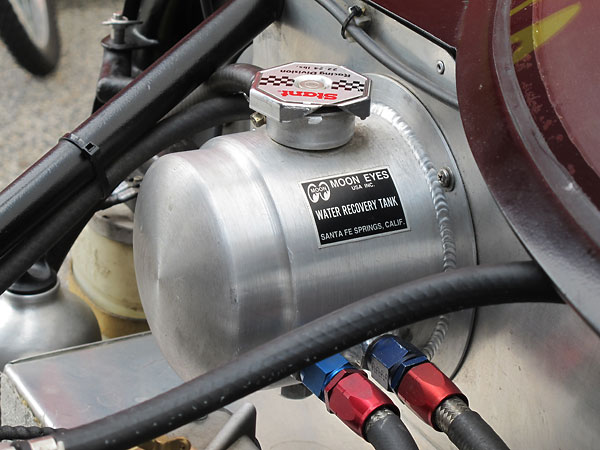
�
Coolant header tank labeled "Moon Eyes USA Inc. - Water Recovery Tank - Sante Fe Springs, Calif."
�
Pressure cap labeled "Stant - Racing Division - 22-24 lbs."
�

�
Left: windshield washer bottle labeled "Lucas - Electric Screenjet - England".
�
Right: coolant overflow tank.
�
�
Front Suspension
��
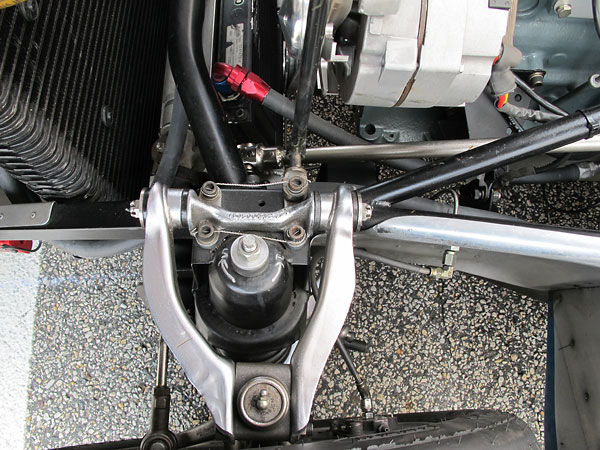
�
TR250K's unequal length dual wishbone front suspension is comprised of Triumph TR4A
�
components, with a handful of tweaks straight from Triumph's Preparation Handbook.
�
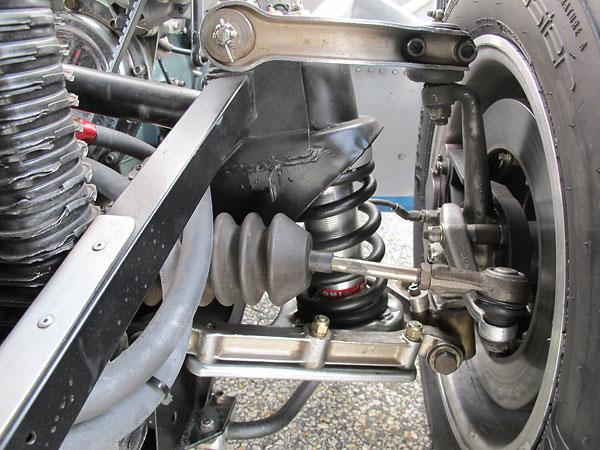
�
Stock Triumph TR4-A forged uprights, manufactured by Alford & Alder.
�
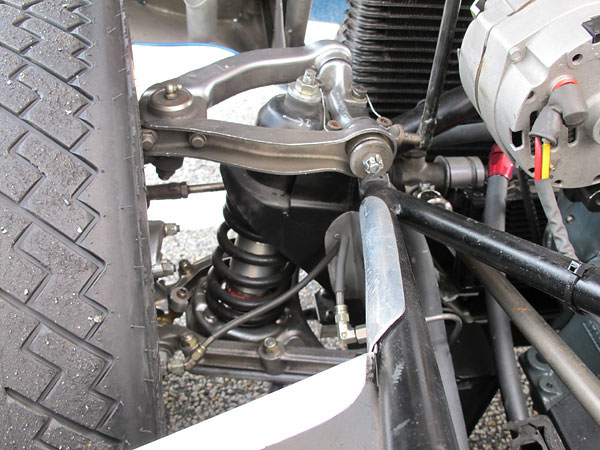
�
KONI telescoping shock absorbers.
�
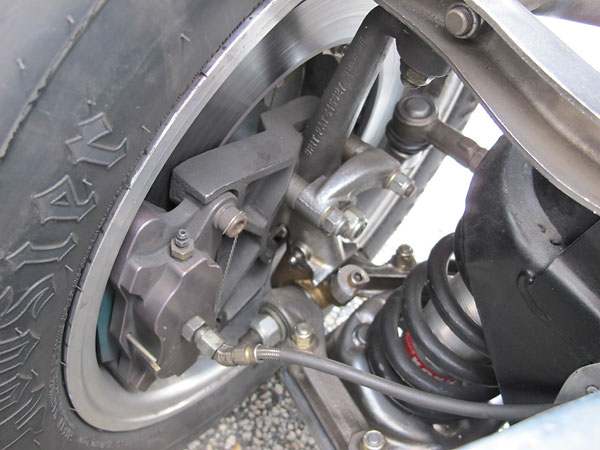
�
Wilwood aluminum brake calipers. Vented rotors.
�
�
Enjoying this article? www.BritishRaceCar.com is partially funded through generous support from readers like you!
�
To contribute to our operating budget, please click here and follow the instructions.
�
(Suggested contribution is twenty bucks per year. Feel free to give more!)�
Rear Suspension
��

�
Triumph rear end with TR4A (not TR5/TR250) style mounting bracket.
�
Hypercoil coil springs. KONI telescoping shock absorbers
�
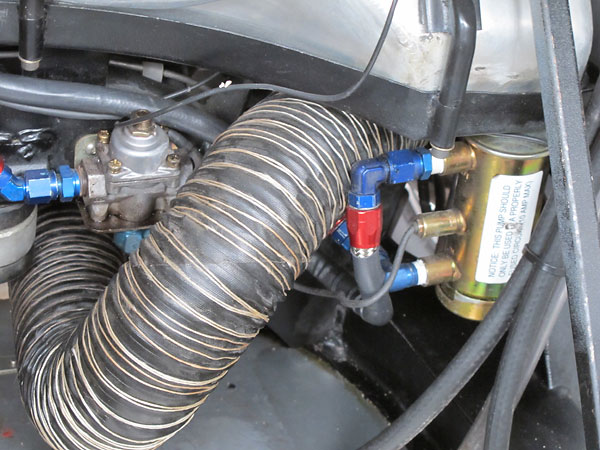
�
Holley adjustable fuel pressure regulator. Facet Bendix-style electric fuel pump.
�

�
Universal Power Group UB12550 sealed lead acid battery.
�
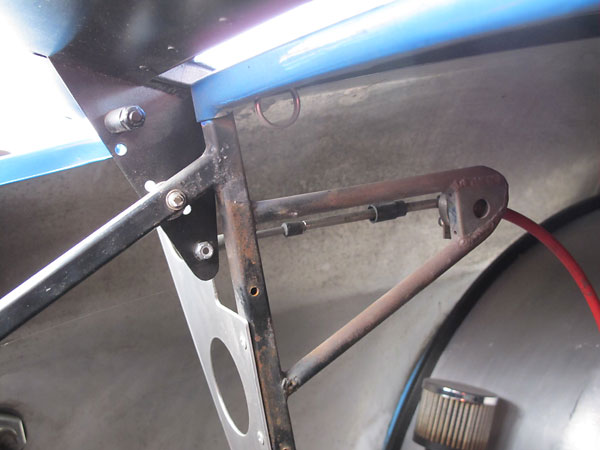
�
Cable-operated spoiler tilting mechanism, remotely operated from a lever on the transmission tunnel.
�
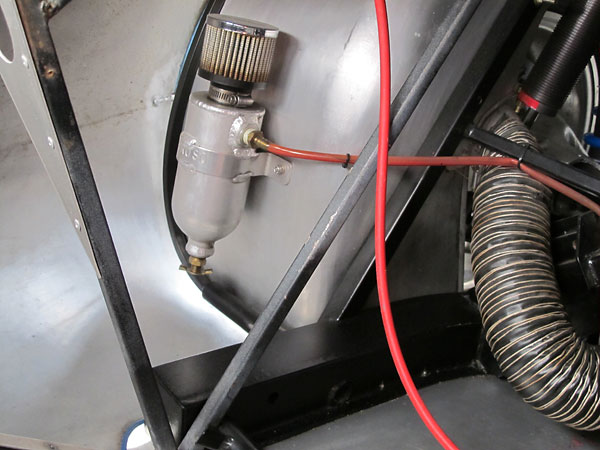
�
A Moroso aluminum breather tank for the differential housing.
�
�
Interior
��
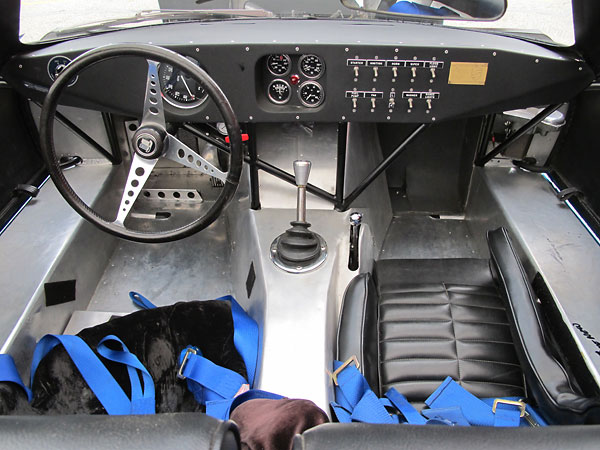
�
TR250K was equipped with a smaller diameter, three-spoke, non-perforated steering wheel
�
at Sebring but it had this style of steering wheel for car shows and photo shoots.
�
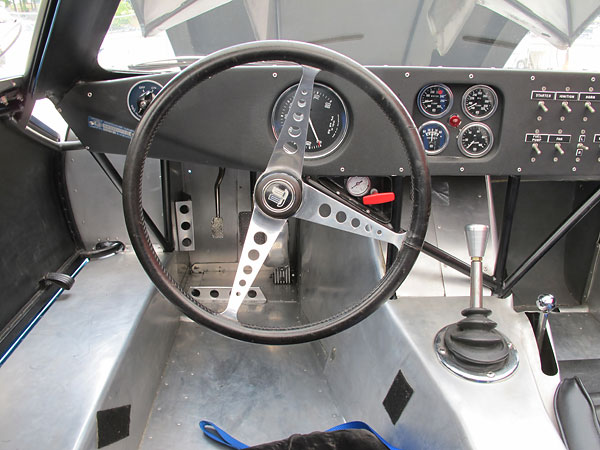
�
To the left of the steering wheel: a Lucas batter disconnect switch mounted with a Cole-Hersee
�
identification plate. Below that: a State of California Assigned Identification Number plate.
�
Below and to the right: a VDO fuel pressure gauge and a fire suppression system pull knob.
�

�
Instruments: Smiths tachometer (0-8000rpm). Stewart Warner water temperature gauge, oil
�
temperature gauge, ammeter, and oil pressure gauge. VDO fuel pressure gauge (below).
�
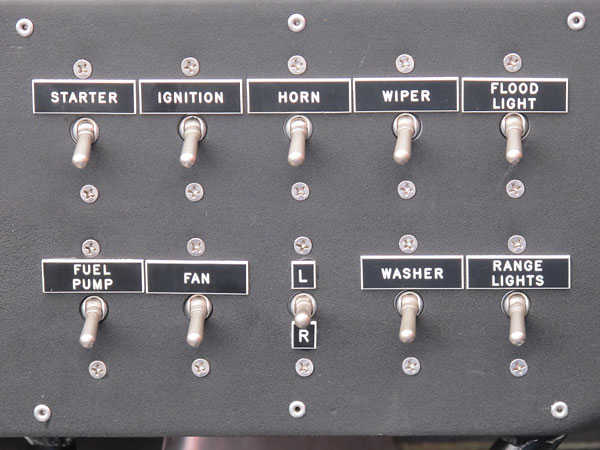
�
Ten toggle switches.
�

�
To the right of the gear selector: a lever for adjusting the rear spoiler's angle of attack.
�
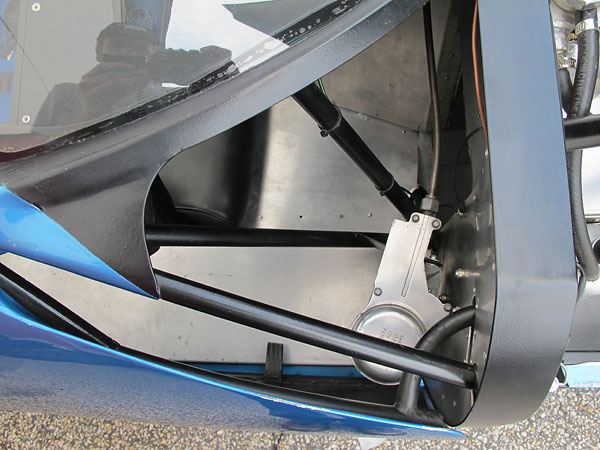
�
Lucas windshield wiper motor.
�
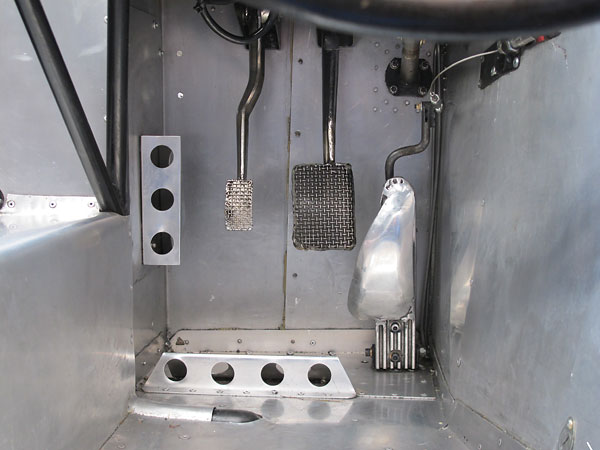
�
Bespoke fabricated pedals.
�
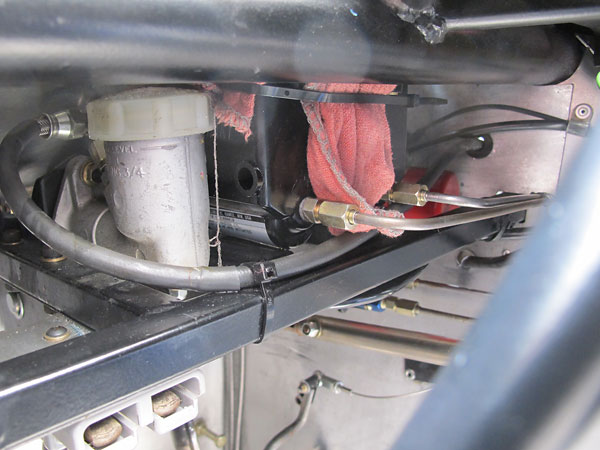
�
Dual Airheart 7/8" resin composite brake master cylinders (part# 31000410), with bias bar.
�
Girling 3/4" aluminum clutch master cylinder.
�
�
Exterior
��
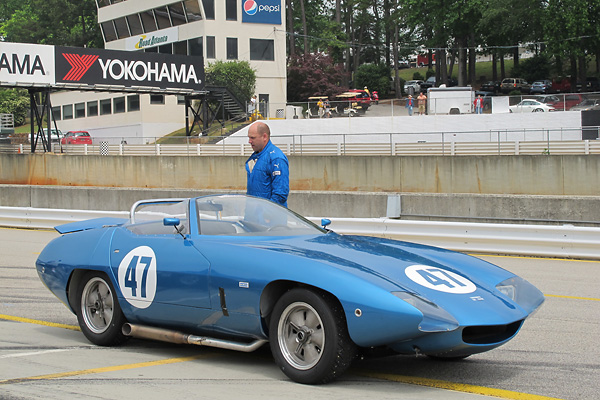
�
Tony Garmey of Horizon Racing restored the Triumph TR250K and now has the pleasure of driving it.
�

�
We enjoyed watching Tony handily win the "Kas Kastner All Triumph Feature Race" during the
�
2012 The Mitty race weekend at Road Atlanta. Tony led the eight lap race from start to finish
�
and drove the quickest lap recorded. His 1:47.502 circuit of the 2.54 mile circuit averages
�
out to 85.059mph. Thirty-one Triumph vintage racecars contested the race.
�
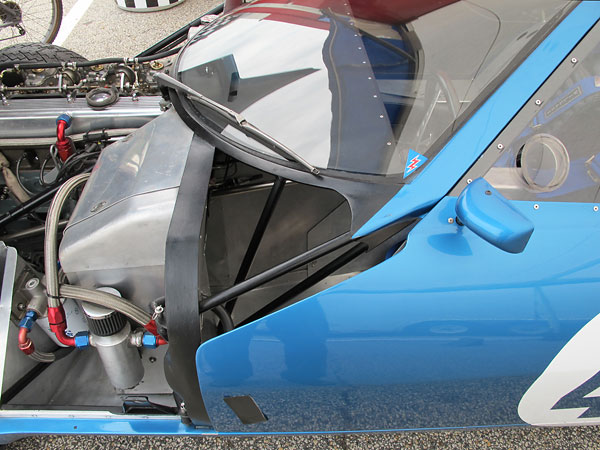
�
A fabrication shop called "Borth and Rose" was hired to fabricate TR250K's aluminum body.
�
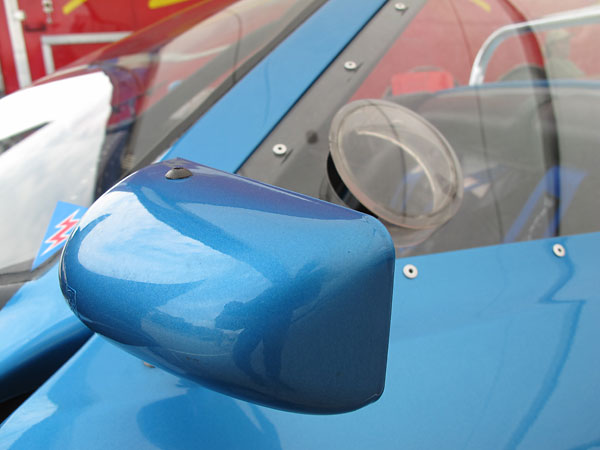
�
TR250K now has SPA Design side view mirrors mounted on both doors. At Sebring in 1968,
�
it was equipped with dual fender-mounted side view mirrors.
�
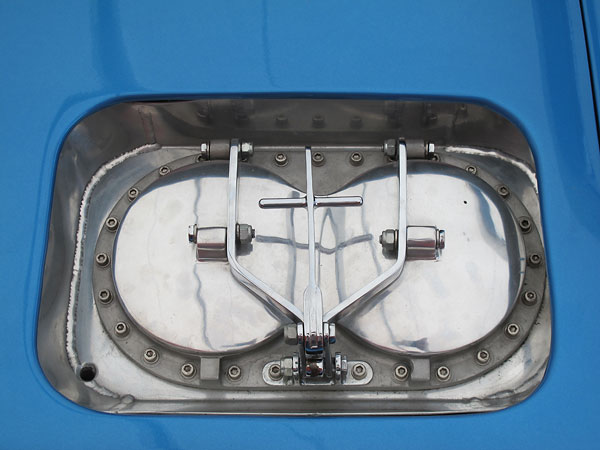
�
Double fuel filler cap.
�

�
Topping off fuel in the paddock.
�

�
In principle, the rear spoiler should allow a team to tune aerodynamic performance for
�
specific race tracks. In practice, the spoiler is always fully up when the car is raced.
�

�
"In Memory of Uncle Jack" sticker. Jack Drews (1936-2008) was a very well loved racer and
�
tuner of Triumph sportscars. He used to drive a handsome blue and white Triumph TR4 (#59).
�

�
At Sebring in 1968, TR250K wore California license plate number "E92 677". It now displays
�
plate number "TR 250K" in a Racing for Kids frame. Since 1989, the Racing for Kids
�
charity has raised nearly $5 million to help hospitalized children.
�
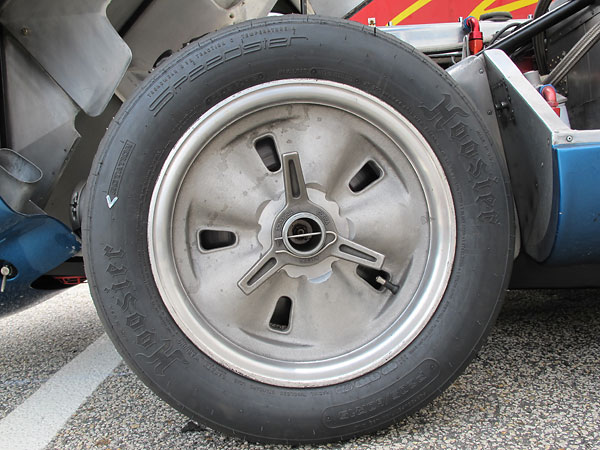
�
Custom aluminum racing wheels mounted with Cobra Racing stainless steel wingnuts.
�
When raced at Sebring, the TR250K had bolt-on wheels (with a 5x4.0" lug pattern).
�

�
Hoosier Speedster radial tires (205/60R15).
�
| Notes: | ||
| (1) | �
The TR250 model name reflected a temporary deviation from the company's standard�
naming convention, so readers may be excused for not knowing how it fits in among�
the more obvious progression of TR2 through TR8 models. In a nutshell, the TR4�
had been a successful four-cylinder roadster in North America from 1961 through 1965.�
During 1965, Triumph began providing the TR4 with independent rear suspension. Even �
though live axle rear suspensions remained available as optional equipment, �
later model TR4's were labeled "TR-4A". When a mechanically fuel-injected six cylinder�
engine variant became available, Triumph decided to badge it as a TR5. Their North�
American dealers baulked at fuel injection, so Triumph provided a carbureted version.�
Triumph used the name TR250 to differentiate the North American specific version�
of the TR5 which featured twin Zenith-Stromberg side-draught carburetors in lieu�
of fuel-injection. Why 250? To emphasizing the model's new 2.5 liter engine displacement! �
� In production tune, the carbureted TR250 engine was only rated 111bhp. That's fully 39bhp� less than the fuel injected version, even though the build specifications were otherwise� identical. As an interesting but trivial aside, Kas Kastner recalls that the TR250K team� actually had a TR5 (fuel injected) engine in their shop for evaluation and chose to use� it in the TR250K, but the team removed the engine's fuel injection system and installed� triple Weber carburetors. � � | |
| (2) | �
To this day, Peter Brock is still bitter about how the TR250K project panned out.�
As of December 2012, his website includes these remarks: "Instead of buying the design, British�
Leyland decided to do a re-design and produce a shoddy reproduction known as the Triumph TR7.�
The car failed and the company went bankrupt. The American and British press, knowing of the�
TR250K's origins wrote glowing articles at the time speculating on how if the original TR250K�
had gone into production it likely would have saved the company." �
� Shoddy reproduction? Except for being essentially doorstop shaped, TR7 and TR250K� were nearly as different as two sportscar designs could be. TR7 featured unit-body� construction in contrast to the TR250K's body-on-frame chassis. It featured a four cylinder� engine in contrast to the TR250K's inline six. Moreover, TR7 was conceived as a steel-roofed� coupe. A convertible version was produced as an afterthought. TR7 featured pop-up� headlights instead of Perspex headlamp fairings. TR7 sat low to the road whereas TR250K� sat oddly high in front and channeled airflow under the car. The TR7 bonnet and windscreen� were essentially flat and rectangular, whereas TR250K's shapely one-piece front clip opened like� a clamshell (a la Jaguar XKE, difficult to protect with a bumper and expensive to repair,)� and its wrap-around windscreen was radically swept-back. TR7's rear deck sat much lower than� TR250K's. Triumph never offered a rear spoiler for TR7, whereas TR250K's rear� spoiler was arguably its single most memorable feature. � � The car failed and the company went bankrupt? Combined production of Triumph's TR5, TR250,� and TR6 models totaled up to just 106,046 cars spanning ten model years whereas TR7 production� reached 141,232 cars (112,368 coupes plus 28,864 convertibles) in seven years. � Triumph survived more than twelve years beyond introduction of the TR250K show car.� � In the April 1968 Car and Driver article, Kas Kastner expressed enthusiasm for "the BOP V-8 engine"� as a possible alternative for a commercialized version of TR250K. That classic all-aluminum 3.5L� V8 was ultimately offered by Triumph in the TR8 model which shared bodywork with TR7. A decade� after the TR250K, Triumph TR8s dominated their classes in both road racing and rallying. � � | |
�
| �
�  � Bill Babcock's Triumph Peyote Mk2, as photographed by Curtis Jacobson for BritishRacecar.com � Did you enjoy this article? We currently have eighty more in process, featuring about 6000 new photos. � But it takes a lot of time and expense to turn photos into articles, and to publish them on the internet. � Please consider making a contribution. Your donation will help us publish more and better articles! � While you're at it, tell us which racecars interest you most. We value the opinions of our funders. � � |
�
�
All photos are from April 28-29, 2012 when we viewed the car at "The Mitty" at Road Atlanta in Georgia. �
All photos by Curtis Jacobson for BritishRaceCar.com, copyright 2012.�
All rights reserved.
�
| If you liked this article, you'll probably also enjoy these: | �|||||
 | �
Bill Hart '57 Devin Triumph | �
 | �
Ken Williamson '68 MGC GTS | �
 | �
Mead Korwin '71 Lola T192 | �
| You're invited to discuss anything you've seen here on The British Racecar Motorsports Forum! | �|||||
�
Notice: all the articles and almost all the photos on BritishRacecar.com are by Curtis Jacobson.
�
(Photos that aren't by Curtis are explicitly credited.) Reproduction without prior written permission is prohibited.
�
Contact us to purchase images or reproduction permission. Higher resolution images are optionally available.
�

 �
�